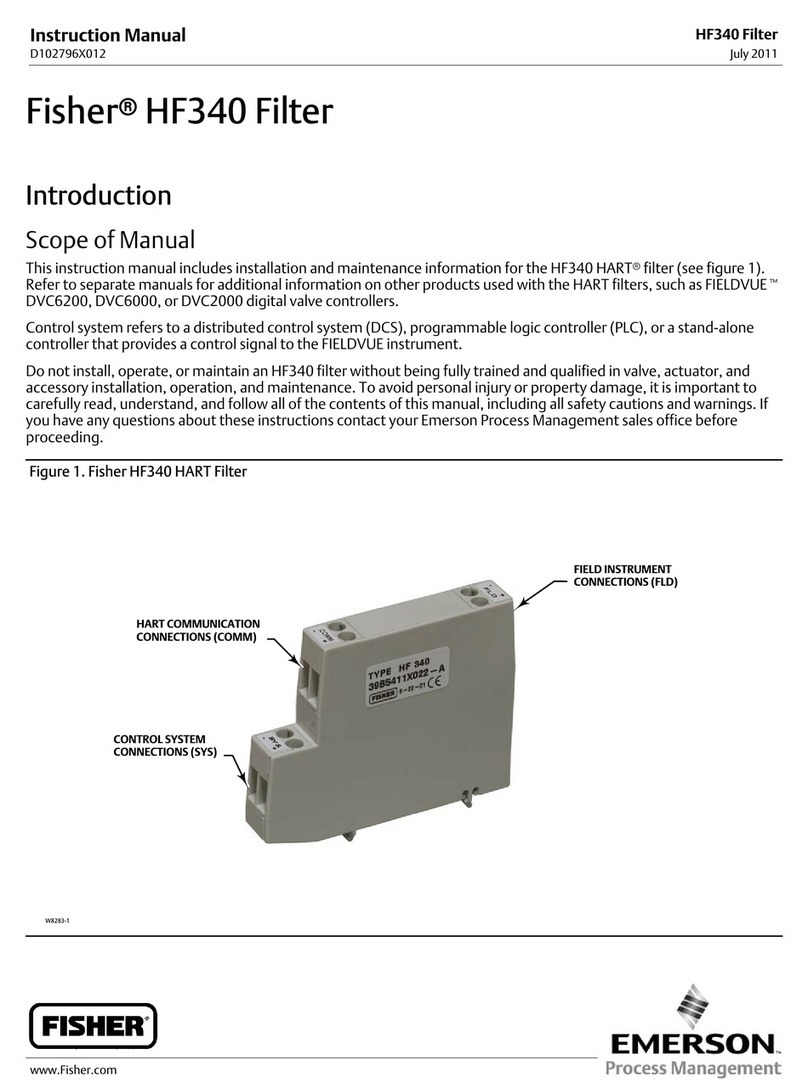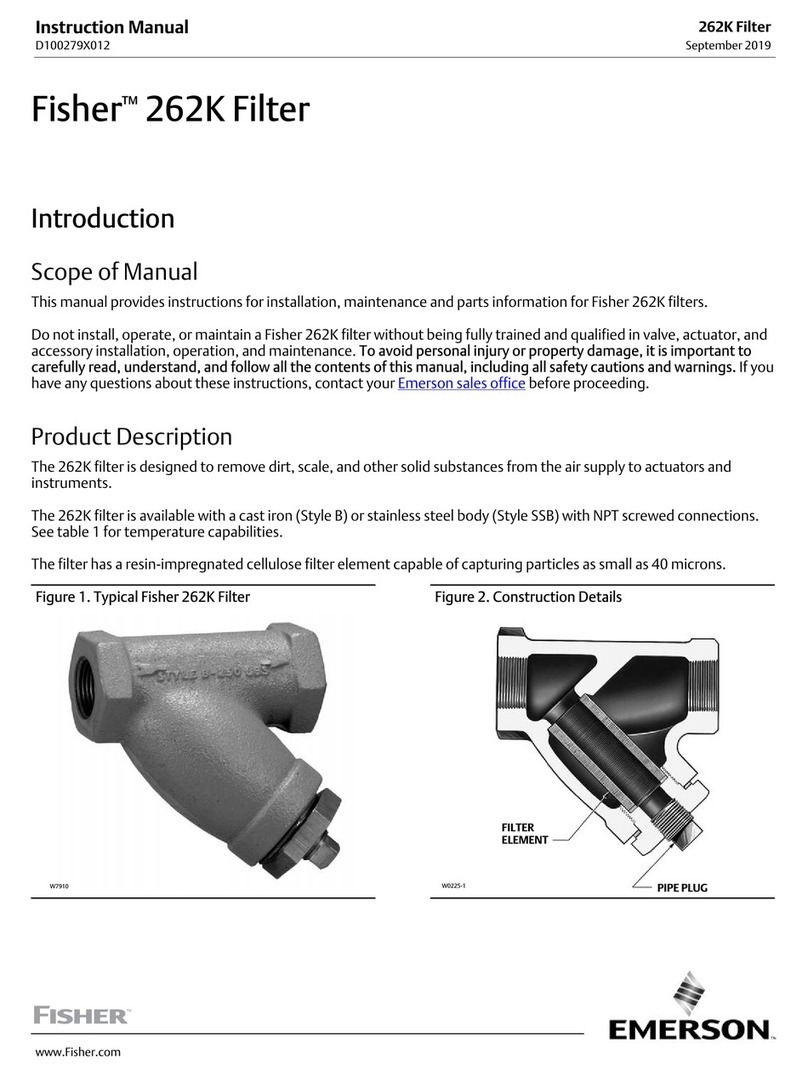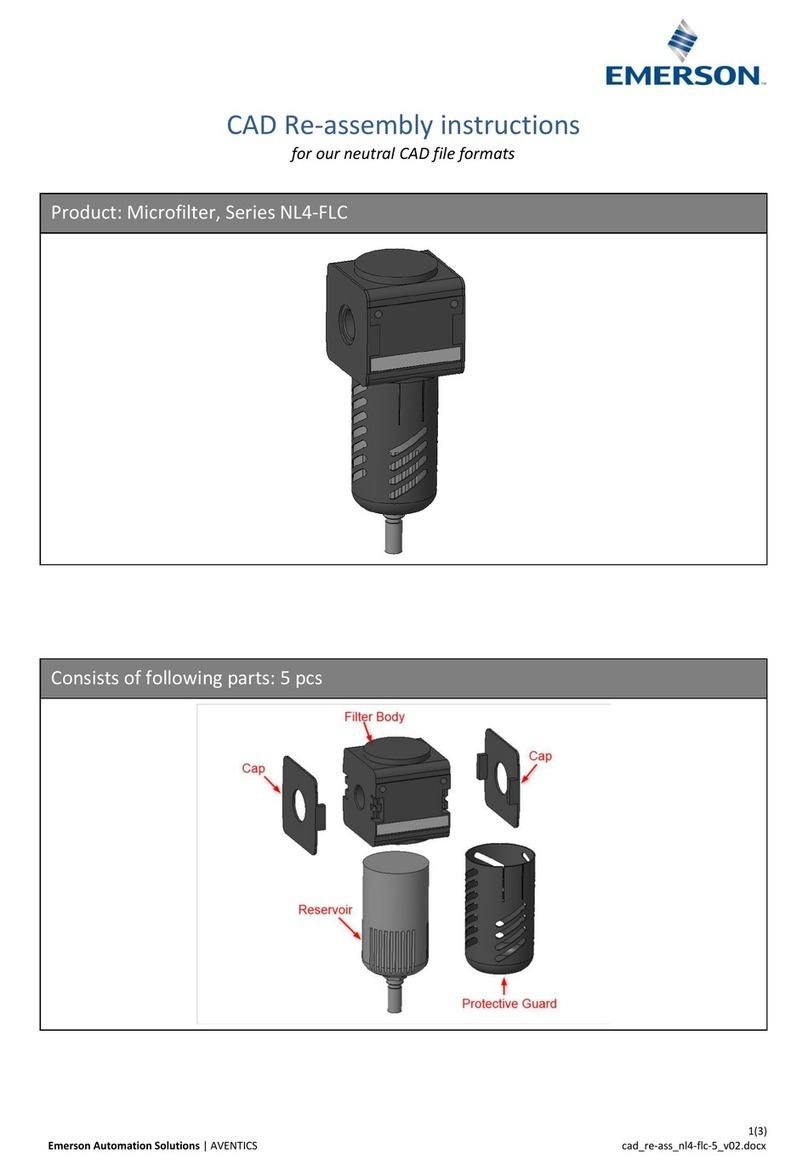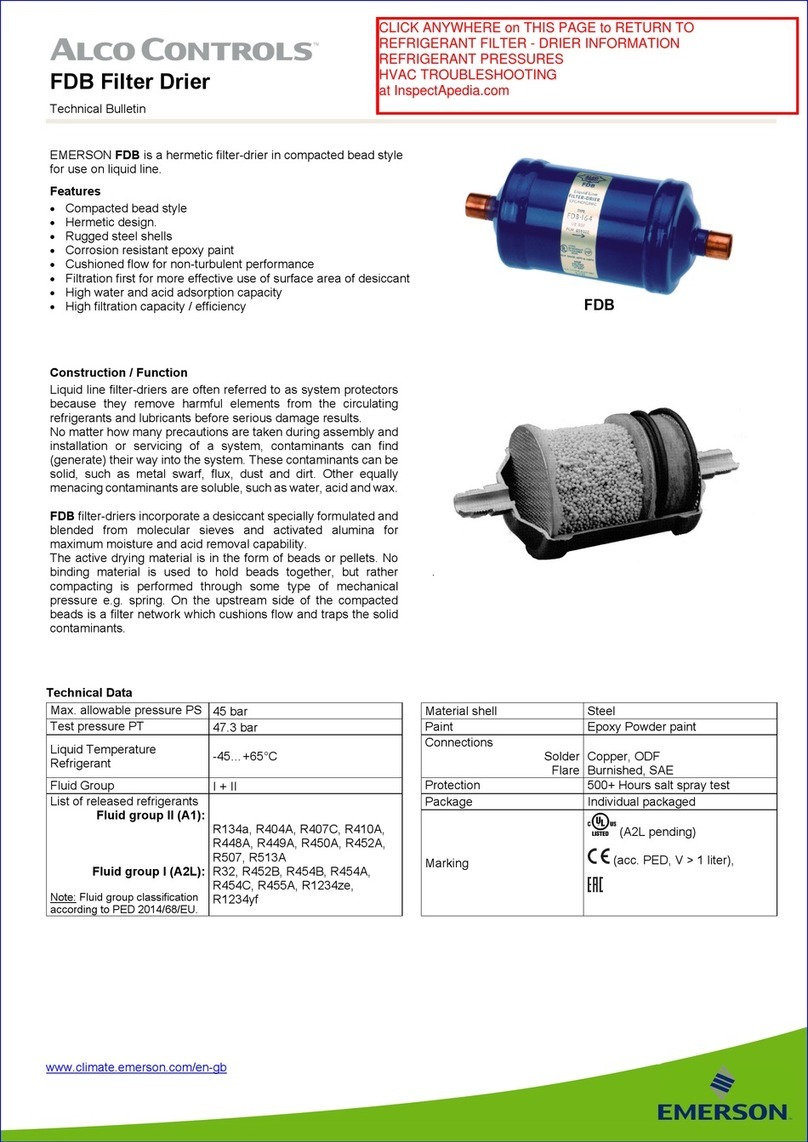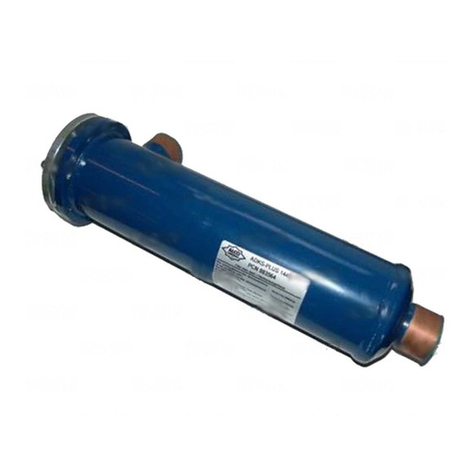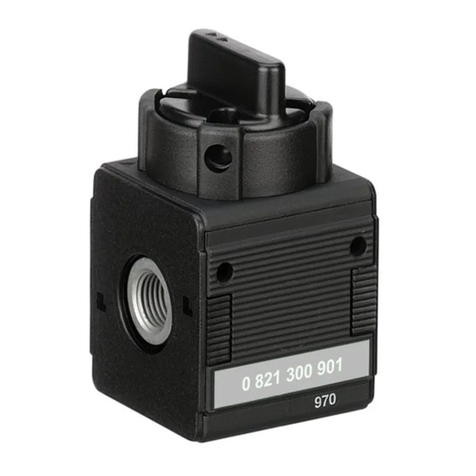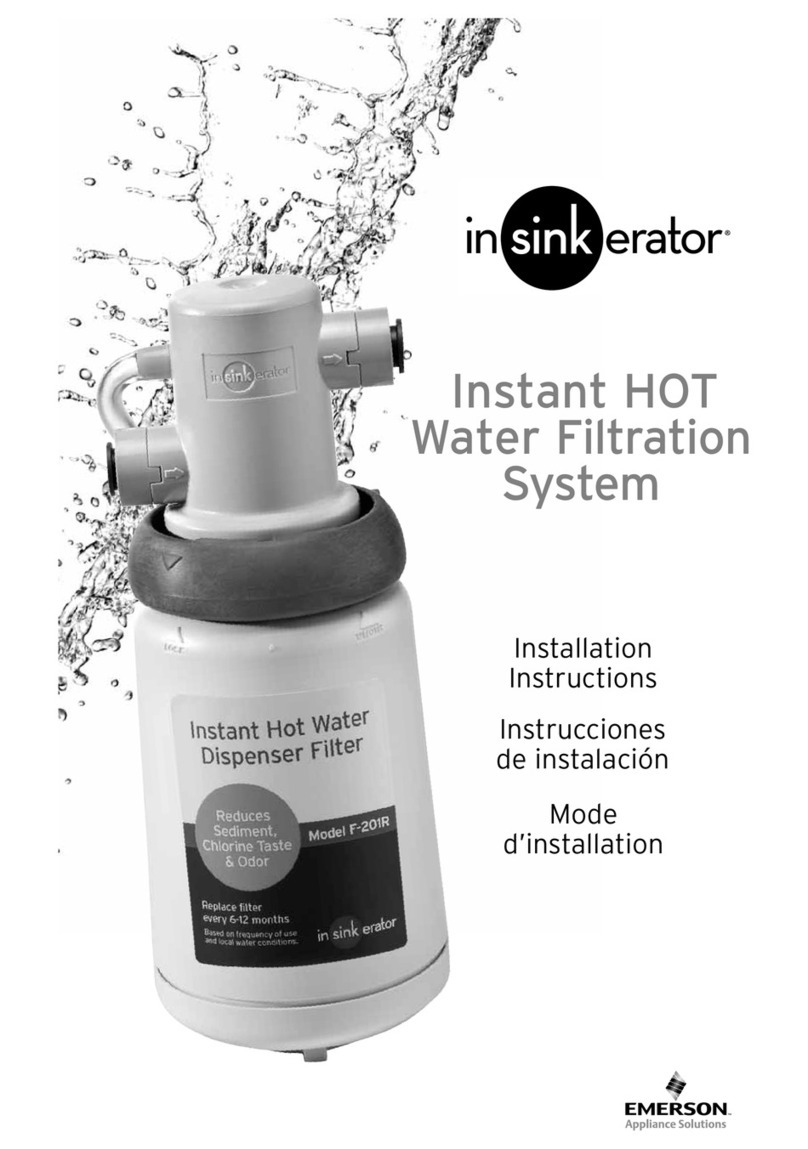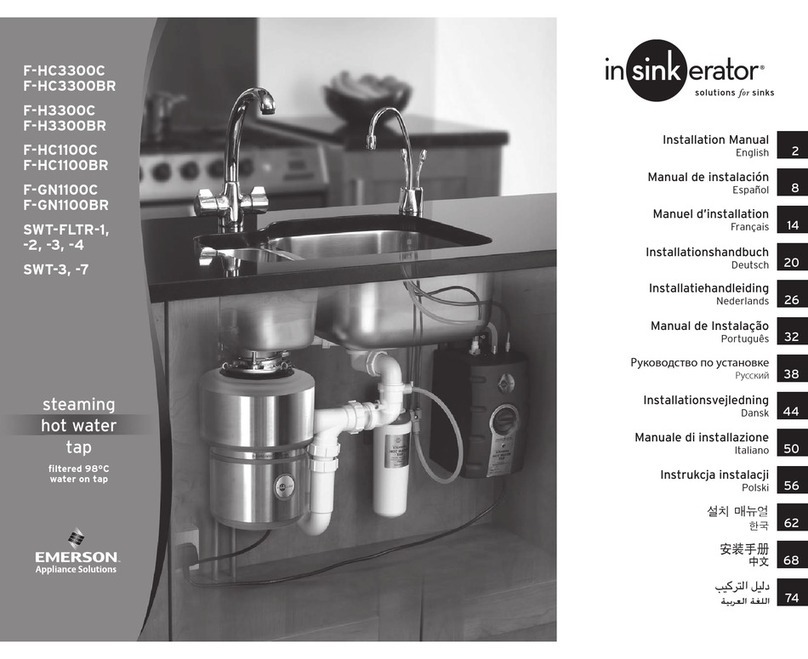
4
FAG and FA Series
• with a view to preventing and providing protection against
explosions, technical and/or organizational measures
appropriate to the nature of the operation shall be taken
(e.g. : lling/exhausting of fuel gas of internal volume
of the isolated part/entire installation with vent lines
to safe area - 7.5.2 of EN 12186 & 7.4 of EN 12279 ;
monitoring of settings with further exhaust of fuel gas to
safe area ; connection of isolated part/entire installation to
downstream pipeline; ….)
• provision in 9.3 of EN 12186 & 12279 shall be enforced by
pressure regulating/measuring station/installation’s end user
• external tightness test shall be carried out after each
reassembly at installation site using testing pressure in
accordance with national rules
• periodical check/maintenance for surveillance shall be
carried out complying with national regulations, if any, and
specic manufacturer recommendations
OPERATION
The lter does not require any particular attention to operate
since it has not dynamic component (static equipment).
Anyhow since the lter internal parts are sensitive to
pressure, it is recommended that during startup and
shutdown the variation of pressure will be smoothly. To
facilitate the operator control a proper set of pressure
gauges have to be installed on the nozzles for which it is
foreseen by proper coupling connections.
Each lter cartridge is designed to a maximum dierential
pressure that have not to be exceeded during operation:
preventive maintenance is therefore recommended and
should be carried out with a frequency which, if not laid
down in low, depends on:
• the quality of the gas piped
• the cleanliness and state of conservation of the piping
upstream from the lter: in general after starting up the
systems for the rst time, for example, the maintenance
operations will have to be more frequent if the cleanliness
in the piping is poor.
INSTALLATION
!
WARNING
Only qualied personnel shall install a
lter. Filtering systems should be installed,
operated and maintained in accordance
with international and applicable codes and
regulations. Following notes and instructions
point out, in particular, the “pressure” risk.
Installation, operation and maintenance
procedures performed by unqualied
personnel may result in unsafe operation.
This condition may result in equipment
damage or personal injury. If a leak develops
in the system, the escaping gas may
accumulate and become a re or explosion
hazard. Immediately call qualied service
personnel in case of trouble.
Hazards arising from misuse and
misoperating are: Personal injury, equipment
damage, or leakage due to escaping gas or
bursting of pressure-containing parts may
result if the equipment is installed where its
capabilities (PS and TS) can be exceeded or
where conditions exceed any ratings of the
adjacent piping or piping connections.
To avoid this, install the equipment where:
• Service conditions are within unit capabilities.
• Service conditions are within applicable codes,
regulations, or standard.
• The unit is protected from exposure to physical damage
and/or corrosive substances.
• Suitable pressure-limiting or pressure-relieving devices
have been installed in those instances where supply
pressure is capable of exceeding the maximum allowable
downstream equipment pressure.
National safety standards and established rules shall be
applied in lter installation and operation, concerning, in
particular, electrical works, re, and thunderbolt protection.
All means for venting have to be provided in the assemblies
where the pressure equipment are installed.
Before installation, check shall be done if service conditions
are consistent with use limitations.
Where this product is used:
• provide the cathodic protection and electrical isolation to
avoid any corrosion
• the gas shall be cleaned by proper lters/separators/
scrubbers to avoid any technical & reasonable hazard of
erosion or abrasion for pressure-containing parts
Filters shall be installed in non-seismic area and hasn’t to
undergo re and thunderbolt action.
Inspection
Upon arrival at site the equipment must be inspected for
eventual damages occurred during transportation. At least,
the following points have to be inspected:
• Integrity of nozzles closure and equipment sealing.
• Status of painted surfaces. If paint is damage any touch-
up shall be carried out in accordance with the project
coating specication.
• Visual check of critical areas such as nozzles, saddles, clips.
Any damage shall be reported to quality control oce and
eventually to the vendor in order to agree and coordinate
any repair work.
